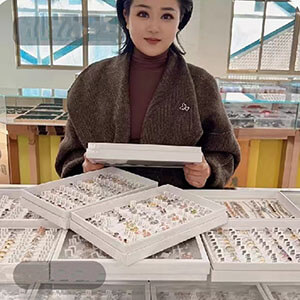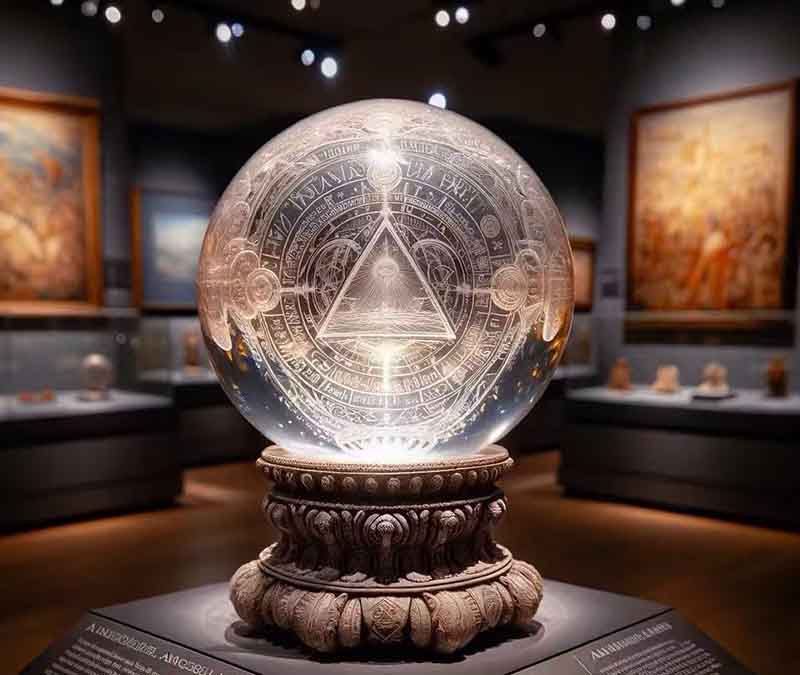Ruby and sapphire belong to the world’s top five precious stones. Because of mining’s long history, it has been regarded as a sacred symbol and highly valued.
Although the two minerals are the same, both are from the same mother “corundum”. Appearance seems like a different color, so why is the price difference so big?
Don’t worry, let’s look at the comparison first.
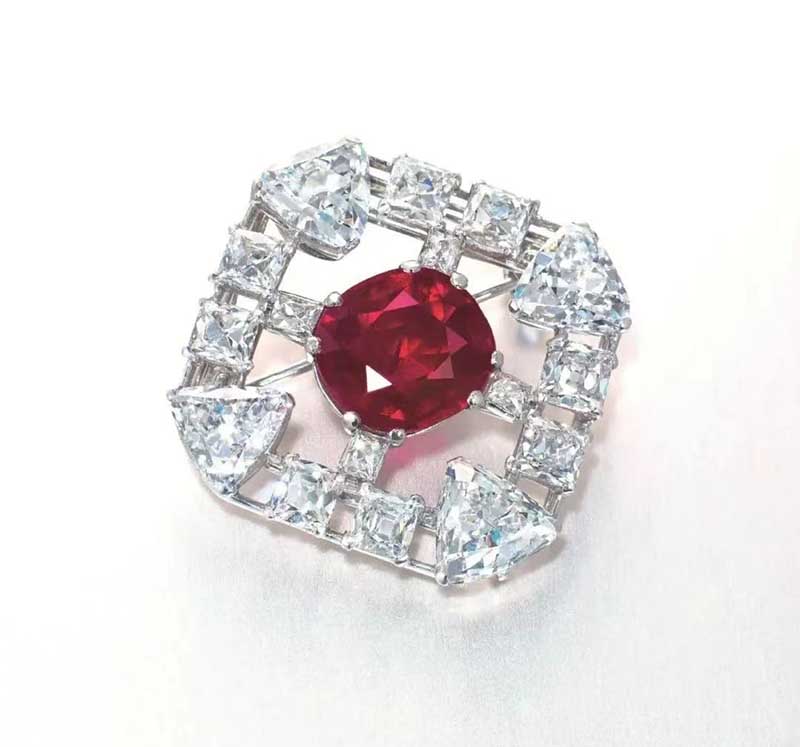
The ruby brooch pictured above is from Christie’s Hong Kong Autumn Auction 2014.
The main stone ruby weighs 10.10 carats, is the ruby circle in the “top stream” Myanmar pigeon blood red ruby.
It sold for HK$650,800,000, setting a new world auction record for a ruby at the time.
At the end of the auction, the ruby brooch was named “Zoe Red” by the buyer, which triggered the phenomenon of “Finding Zoe in the city” at that time.
The buyer was revealed to be Hong Kong tycoon Allen Liu, who purchased the ruby brooch for his eldest daughter.

This sapphire diamond ring, the main stone sapphire weighs 10.33 carats.
Is the sapphire circle in the “top stream” Kashmir sapphire, clarity is also very high.
It sold for HK$19,160,000, three times the price of the 10.10 carat ruby above at HK$6,508,000.
Let’s look at a larger ruby and sapphire comparison:
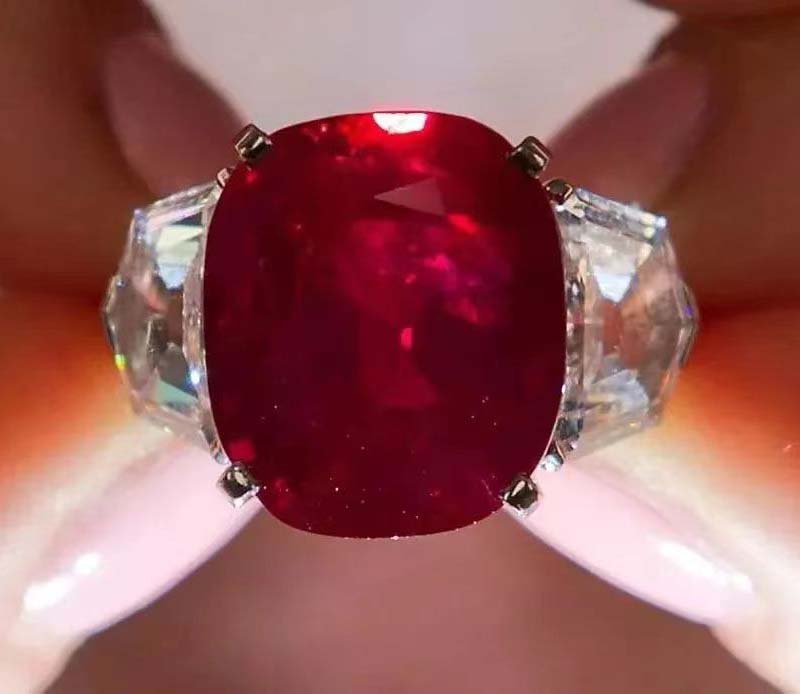
In the picture above, the famous Sunrise ruby ring.
The main ruby is 25.59 carats and comes from Burma. It is unheated in color, pigeon red.
It was sold to Sotheby’s in 2015 for approximately HK$234,825,000.
The carat price per carat was a whopping HK$9,150,000, which set a record for the highest ruby auction total in the world at the time. It held it for many years.
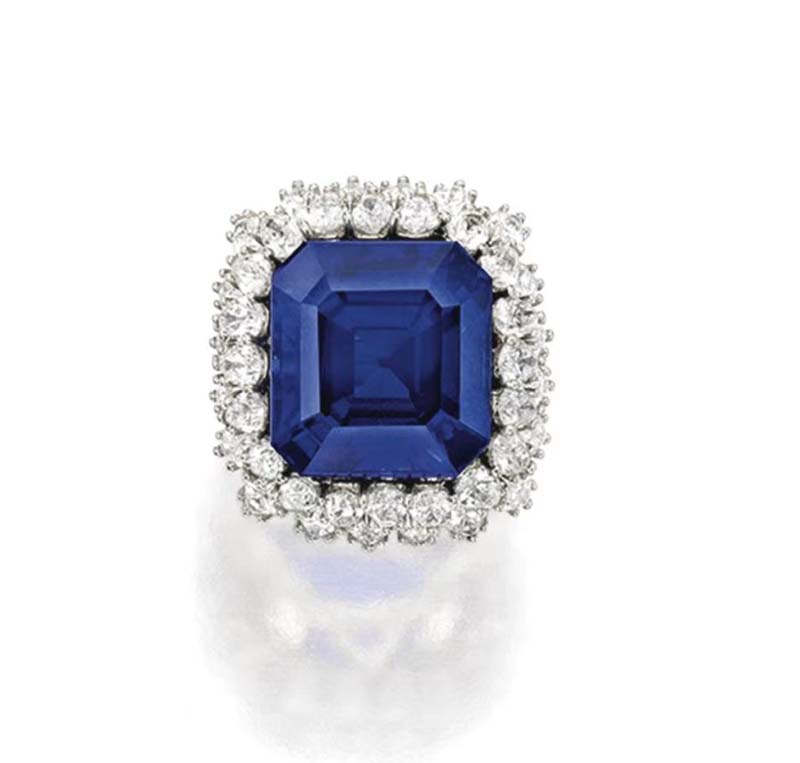
The rectangular step-cut sapphire above weighs 27.68 carats and is from Kashmir. It is unheated and royal blue in color.
Sold to Sotheby’s in 2015 for HK$522,800,000.
This sapphire and the above “sunrise” ruby, the weight is about the same, the color is the best, the price difference is about four times!
Experienced treasure collectors are aware of the “three elements of gemstones”: beauty, durability, and rarity. Ruby and sapphire are the first two elements not similar, then the difference lies in the last item – rare.
Born differently:
Rubies grow in very harsh environments, often stopping or breaking apart due to crustal movements.
Combined with the harsh conditions under which they are mined, gem-quality ruby crystals eventually reach the world are very small.
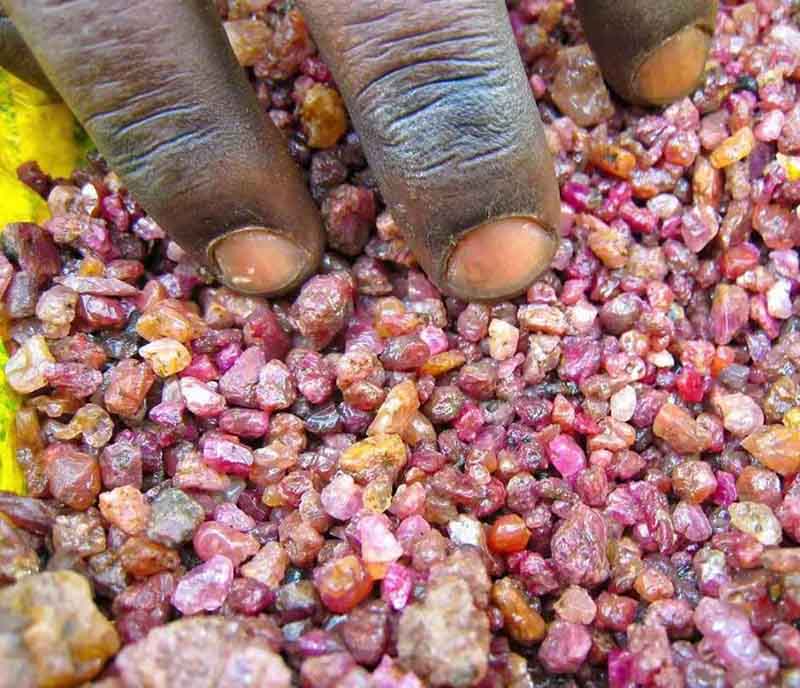
The majority of rubies weigh less than 1 carat, while the number of rubies in the 1 to 3 carat range is much smaller, and even less in the pigeon’s blood red range.
Rubies in this weight range are sought after by jewelry lovers.
Rubies above 5 carats belong to the rare range of high-quality rubies, with good investment properties. 10 carats of rubies is even more rare. If the color can reach pigeon’s blood red, and the clarity is good, you can go to the auction round.
The ruby ring pictured above has a 6.41 carat Burmese ruby with no burns.
A stunning color, it can reach the top of the pigeon’s blood red spectrum, and the price is well-known as well, selling at 21955000 Hong Kong dollars in the 2020 Sotheby’s auction.


The cushion-shaped ruby ring pictured above features a 5.05 carat Burmese ruby of burnt-free color. The color is also top quality pigeon blood red and sold for HK$158,500,000 at Christie’s in 2020.
Sapphires are grown in a more forgiving environment than rubies, so their weight range is significantly wider than rubies.
Take for example the high-quality, unfired “royal blue”, “cornflower blue” and “peacock blue” sapphires.
The 3 to 5 carat range is not too small; the 5 to 10 carat range is not too big a problem, and the 10+ carat range can be attempted if the jeweler is willing to do so.
For sapphires over 100 carats, you might want to watch auctions:
The sapphire pictured above is a Queen of Romania sapphire weighing 478.68 carats. It sold at Christie’s Geneva auction in 2003 for $2,050,000.
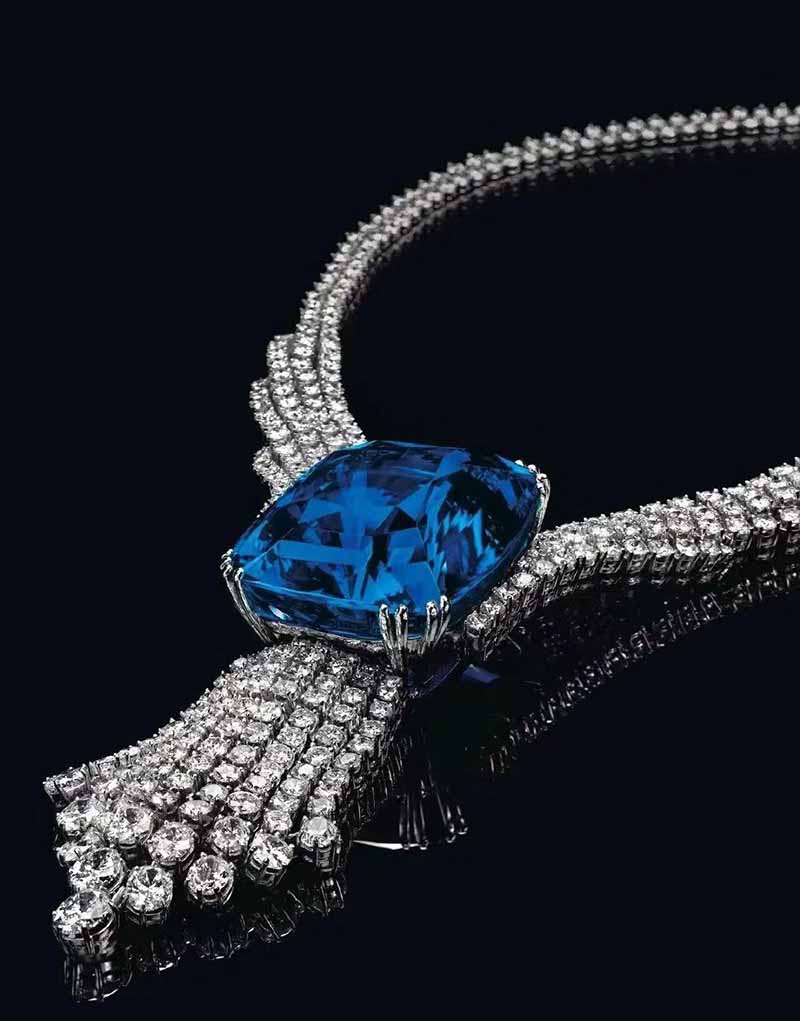
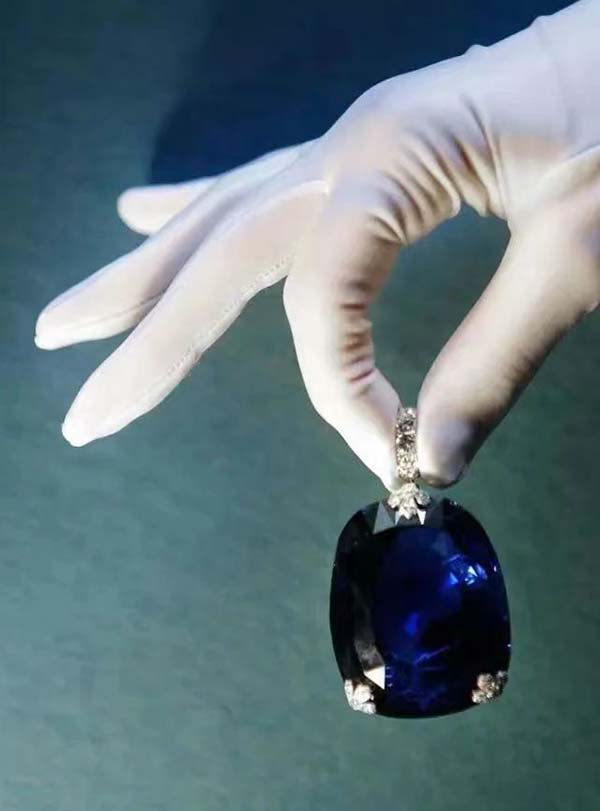
The Asian Blue Beauty necklace pictured above has a 392.52 carat peacock blue sapphire as the main stone.
As you can see from the information in the auction, large carat rubies are more rare than sapphires. That is why rubies are more expensive for the same weight and quality.
The scarcity of color-causing elements varies:
In addition to being influenced by the movement of the earth’s crust at the time of growth, nature’s mineral elements also contribute to the scarcity of rubies.

As we have said in previous popularizations, rubies and sapphires belong to the corundum family. The red ones are called rubies and the other colors are called sapphires.

The main reason for their different colors is the chromogenic element: chromium for rubies and iron and titanium for sapphires.
When corundum crystals contain a sufficient amount of chromium, you get a beautiful ruby.
However, as we mentioned earlier, rubies grow in particularly annoying conditions.
In the case of corundum crystals growing in pegmatite, although there is enough space for them to grow, pegmatite rejects chromium. Instead, it prefers iron and titanium. This makes rubies difficult to produce.

Instead, it gives the large sapphires a chance to come out~
Corundum crystals that grow in contact with metamorphic rocks and dolomites, on the other hand, are more fortunate.
Because this growth environment favors chromium over iron and titanium, rubies are far more likely to be produced than sapphires.
However, there is not much space in this environment, so rubies are small and large carats are rare.
The clarity is different:

Even if a ruby is lucky enough to pass the first two hurdles and grow large and red in peace.
But it has a third test to face.
Ruby crystals grown in regional metamorphic rocks grow through marginal gaps in the solid grains and therefore often contain many solid inclusions.
These inclusions can be large or small. The small ones that do not affect the clarity of the stone to the naked eye are the inclusions that know what they are doing.

The inclusions that I don’t know better are the ones that are so large that you wouldn’t buy them if you weren’t blind.
Some inclusions will even keep the ruby fissured as it grows. In reality, most inclusions don’t know any better.
Though quality sapphires, too, are precious and have always commanded high prices.
But compared to the two, rubies are produced in much smaller quantities, and large ones are even rarer.
Rubies with large heads, few cracks and high color are rare, and are naturally more expensive.
Summary: Rarity is why rubies are more expensive.



